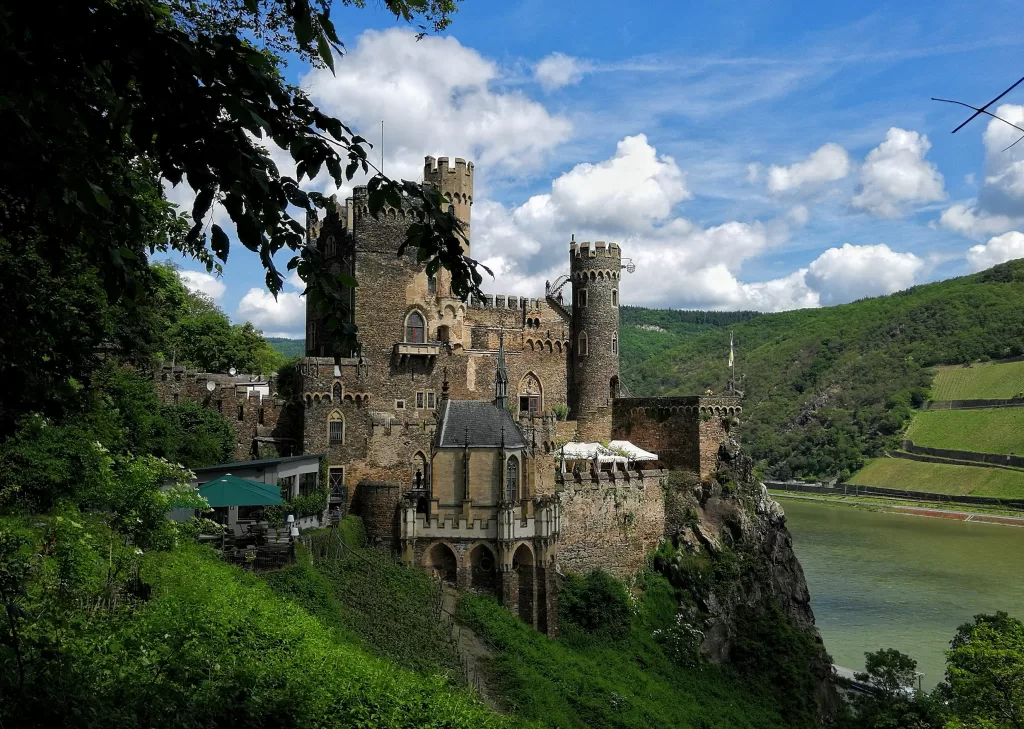 Burg Rheinstein, located in the Rhein Valley, is part of the UNESCO World Heritage Site. Having passed through various hands, including Princes of Prussia, it is now privately owned by the Hecher family but remains open to the public. This castle is a Spornburg, meaning it’s a summit castle flanked by cliffs.
Burg Rheinstein, located in the Rhein Valley, is part of the UNESCO World Heritage Site. Having passed through various hands, including Princes of Prussia, it is now privately owned by the Hecher family but remains open to the public. This castle is a Spornburg, meaning it’s a summit castle flanked by cliffs.
Best time to visit: From late Spring to early Autumn. The opening times vary each year.
Reaching the castle can be challenging since it’s located midway up the mountain in the valley. I recommend traveling to Trechtingshausen Bahnhof (train station) and walking from there to the castle.
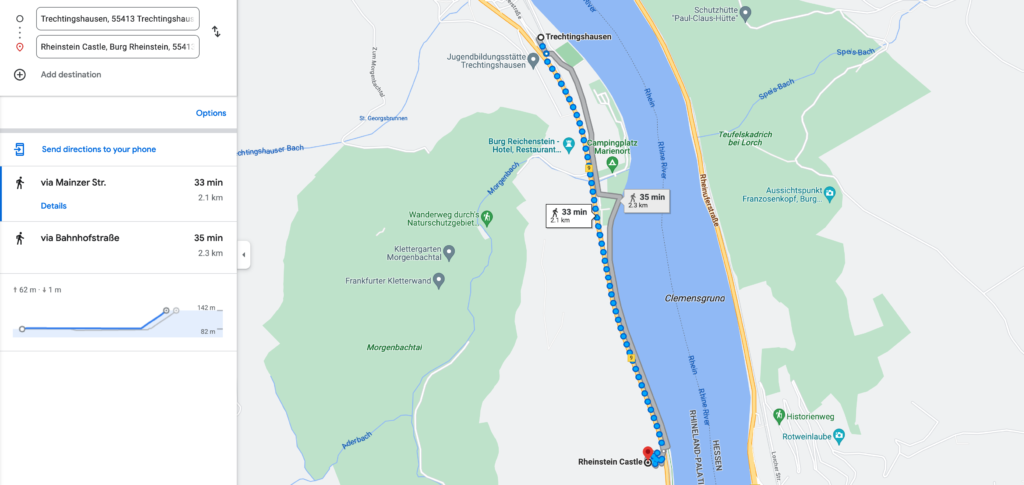
I approached from the opposite direction, starting from Bahnhof Bingen, across from Rüdesheim am Rhein. The walk from Bahnhof Bingen to the castle was quite a trek.
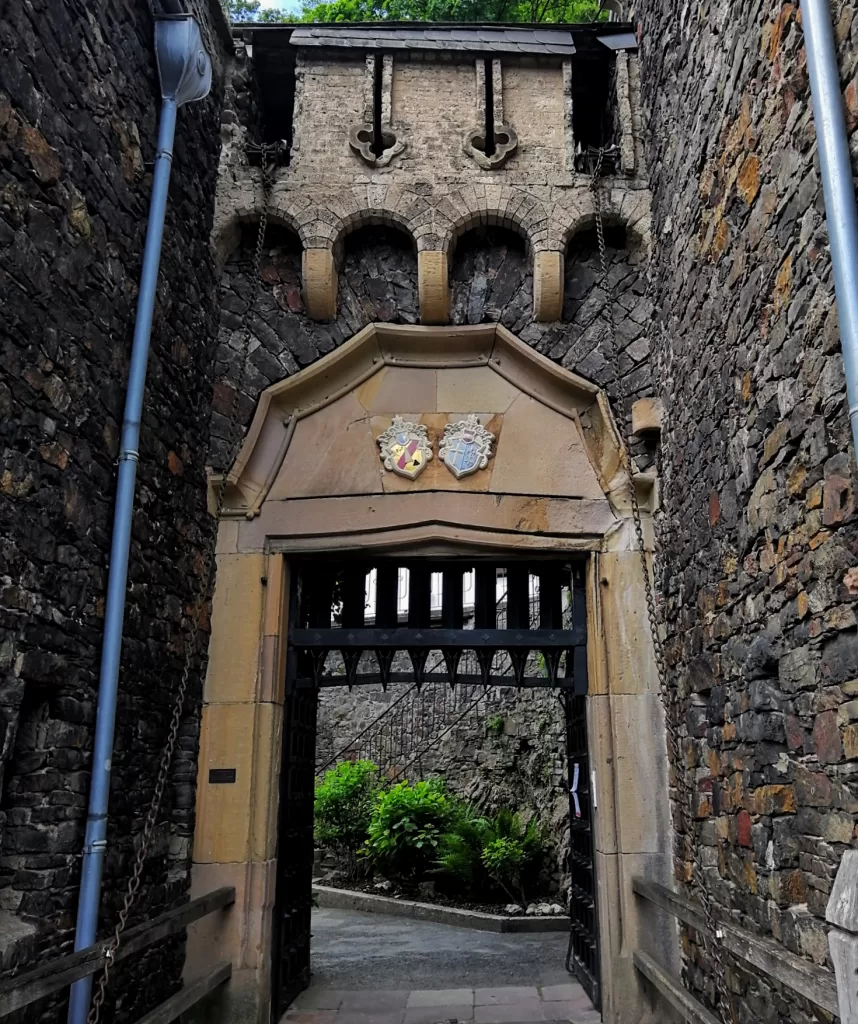 Burg Rheinstein is pretty charming. Its medieval main gate welcomed me in. After purchasing a ticket, I explored its intricate layout, with outdoor stairs connecting various levels and open spaces of the castle. The castle has at least three gardens on different terraces, emphasizing its mountainside location. This layout sparked a flush of envy in me for its current owners – I adore such organically designed gardens.
Burg Rheinstein is pretty charming. Its medieval main gate welcomed me in. After purchasing a ticket, I explored its intricate layout, with outdoor stairs connecting various levels and open spaces of the castle. The castle has at least three gardens on different terraces, emphasizing its mountainside location. This layout sparked a flush of envy in me for its current owners – I adore such organically designed gardens.
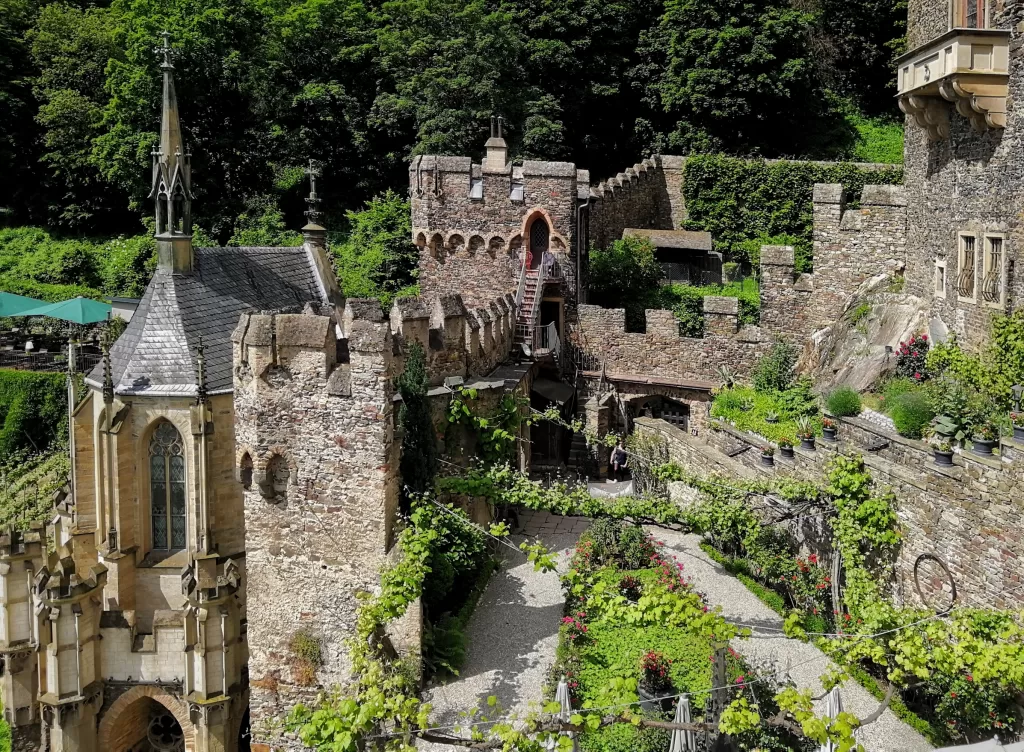
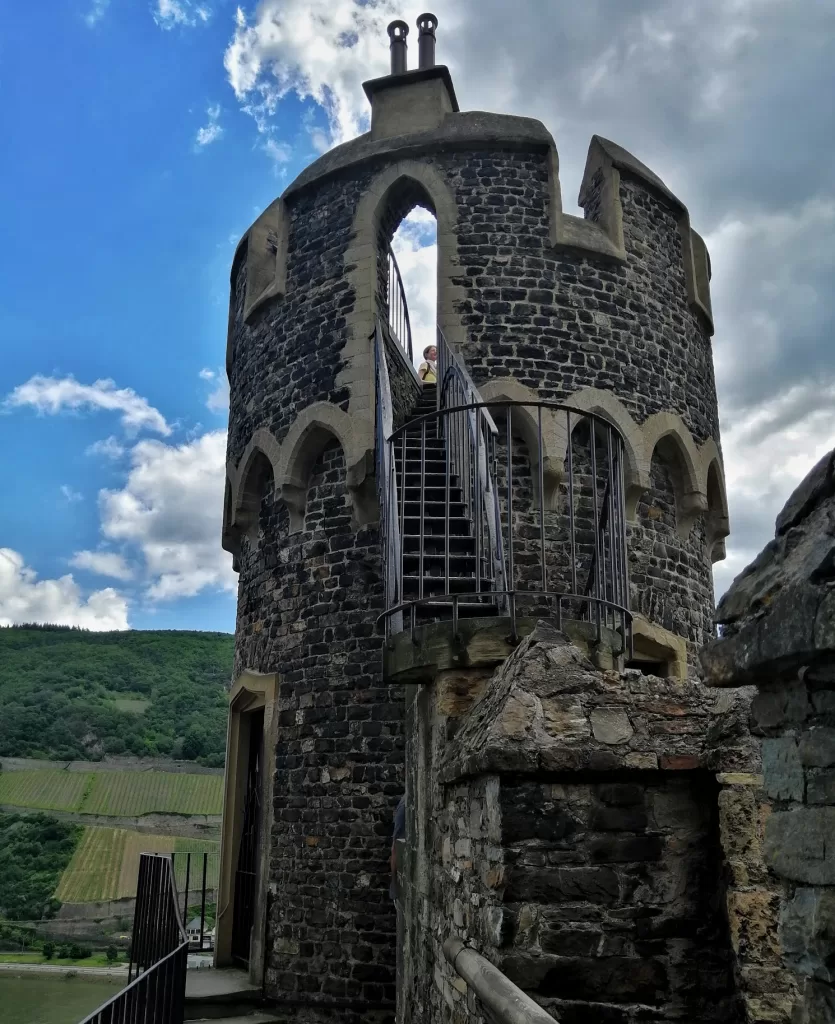 The castle’s vantage points offer breathtaking views of the Rhein Valley. Climbing the highest tower was a nerve-wracking experience, with each step on the shaky steel staircase adding to the thrill:) Despite my fears, the panoramic view of the Rhein from the top was worth it.
The castle’s vantage points offer breathtaking views of the Rhein Valley. Climbing the highest tower was a nerve-wracking experience, with each step on the shaky steel staircase adding to the thrill:) Despite my fears, the panoramic view of the Rhein from the top was worth it.
An amusing anecdote involves a former lord who desired an office in one of the high towers and achieved it. To me, a bedroom there would be ideal, especially with the sound of wind and rain outside.
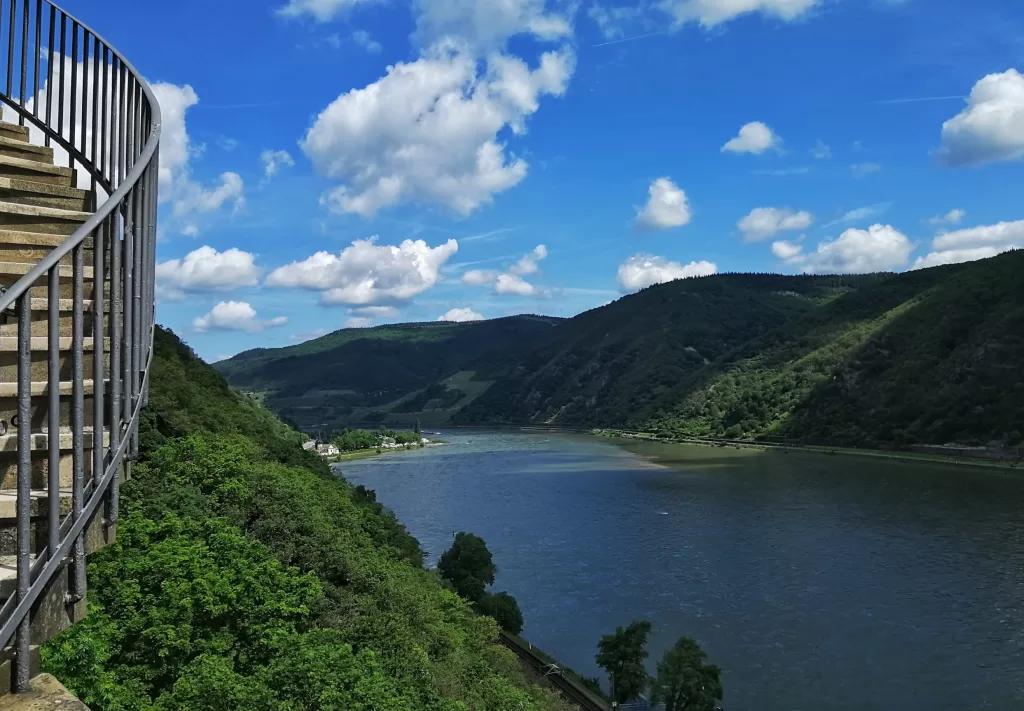
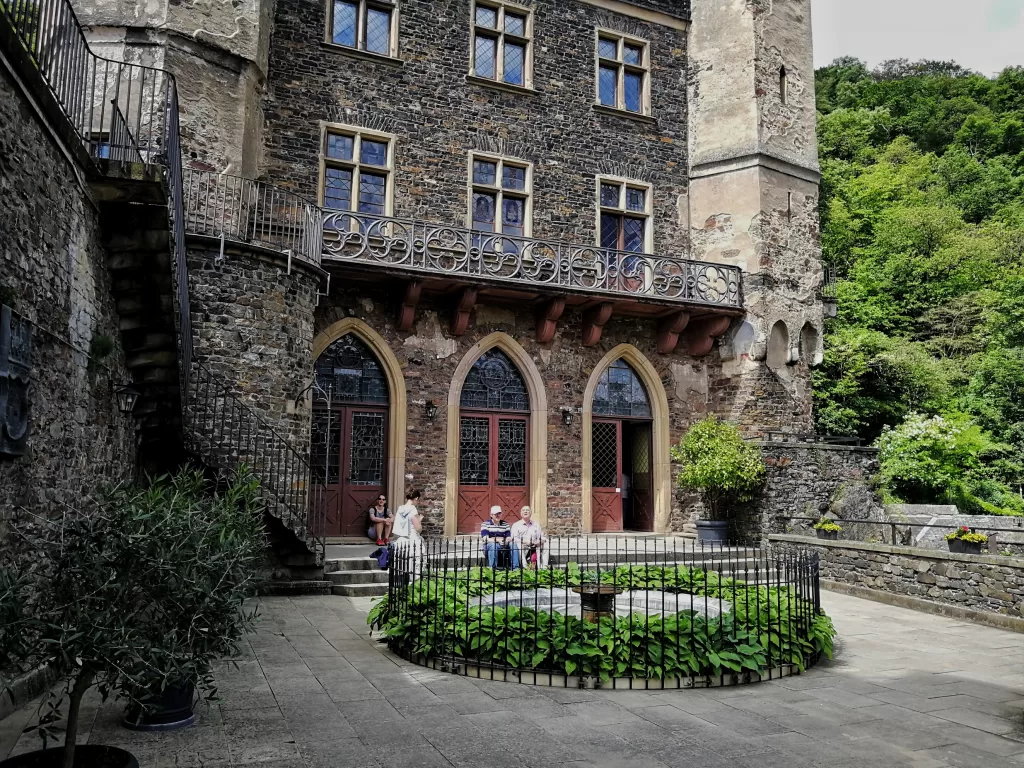
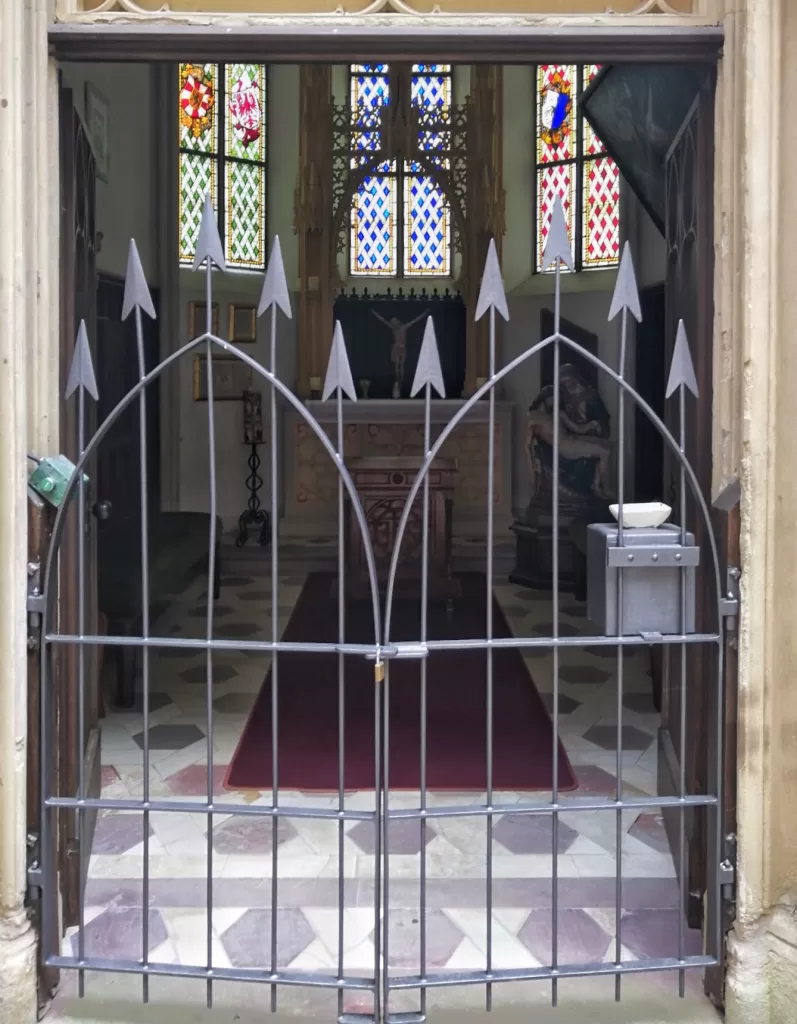 The castle’s keep documents its history and functions as part of a museum. Visitors can see furniture and objects from ancient eras, offering a glimpse into past lives. Descending the stairs, I reached the castle’s lowest point – a small chapel that contained the tombs of lords and ladies. This surprising fact was quite startling for me: while a graveyard in a town might be acceptable, the idea of one within a residence was unsettling.
The castle’s keep documents its history and functions as part of a museum. Visitors can see furniture and objects from ancient eras, offering a glimpse into past lives. Descending the stairs, I reached the castle’s lowest point – a small chapel that contained the tombs of lords and ladies. This surprising fact was quite startling for me: while a graveyard in a town might be acceptable, the idea of one within a residence was unsettling.
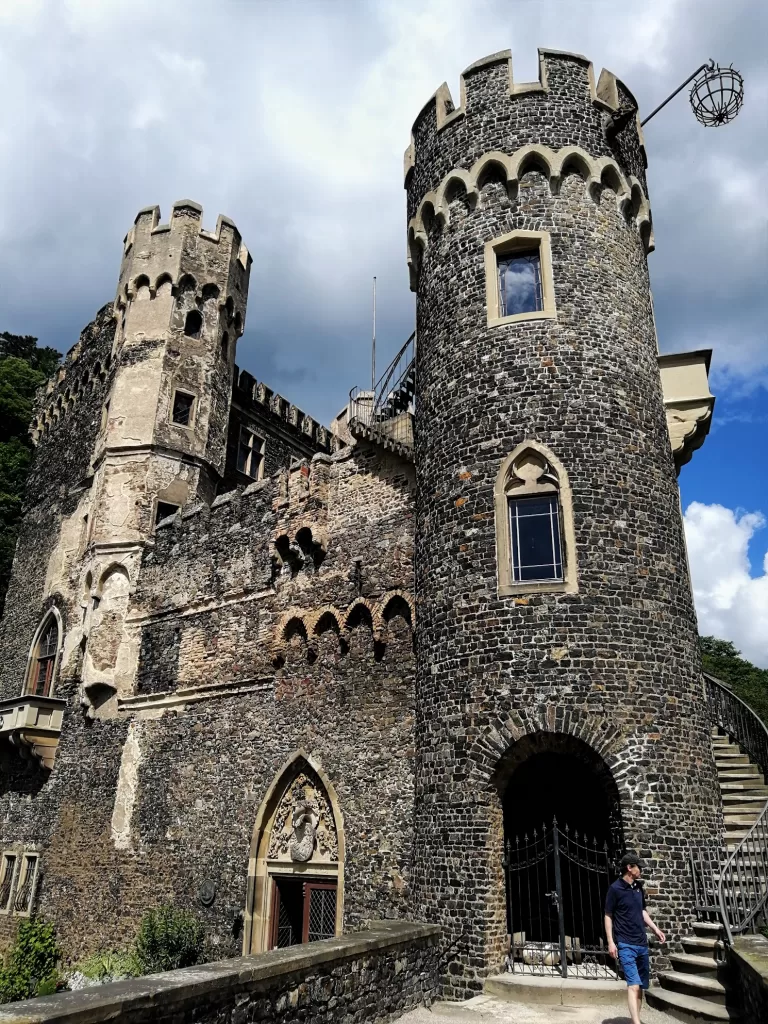 Burg Rheinstein also offers spaces for events and hotel accommodations, which would make for a unique stay. Surrounding the castle are numerous hiking trails, easily located on Google Maps. Heading south provides an excellent viewpoint for photographing the entire castle.
Burg Rheinstein also offers spaces for events and hotel accommodations, which would make for a unique stay. Surrounding the castle are numerous hiking trails, easily located on Google Maps. Heading south provides an excellent viewpoint for photographing the entire castle.
Among Germany’s many castles, Burg Rheinstein strikes a perfect balance between functionality and aesthetics. This castle remains one of my favorites, embodying a blend of aesthetic appeal, rich history, and good functionality.
Exploring the Historic Elegance of Burg Rheinstein

Burg Rheinstein, located in the Rhein Valley, is part of the UNESCO World Heritage Site. Having passed through various hands, including Princes of Prussia, it is now privately owned by the Hecher family but remains open to the public. This castle is a Spornburg, meaning it’s a summit castle flanked by cliffs.
Best time to visit: From late Spring to early Autumn. The opening times vary each year.
Reaching the castle can be challenging since it’s located midway up the mountain in the valley. I recommend traveling to Trechtingshausen Bahnhof (train station) and walking from there to the castle.

I approached from the opposite direction, starting from Bahnhof Bingen, across from Rüdesheim am Rhein. The walk from Bahnhof Bingen to the castle was quite a trek.
Burg Rheinstein is pretty charming. Its medieval main gate welcomed me in.

After purchasing a ticket, I explored its intricate layout, with outdoor stairs connecting various levels and open spaces of the castle. The castle has at least three gardens on different terraces, emphasizing its mountainside location. This layout sparked a flush of envy in me for its current owners – I adore such organically designed gardens.

The castle’s vantage points offer breathtaking views of the Rhein Valley. Climbing the highest tower was a nerve-wracking experience, with each step on the shaky steel staircase adding to the thrill:) Despite my fears, the panoramic view of the Rhein from the top was worth it.

An amusing anecdote involves a former lord who desired an office in one of the high towers and achieved it. To me, a bedroom there would be ideal, especially with the sound of wind and rain outside.

The castle’s keep documents its history and functions as part of a museum. Visitors can see furniture and objects from ancient eras, offering a glimpse into past lives.

Descending the stairs, I reached the castle’s lowest point – a small chapel that contained the tombs of lords and ladies. This surprising fact was quite startling for me: while a graveyard in a town might be acceptable, the idea of one within a residence was unsettling.

Burg Rheinstein also offers spaces for events and hotel accommodations, which would make for a unique stay. Surrounding the castle are numerous hiking trails, easily located on Google Maps. Heading south provides an excellent viewpoint for photographing the entire castle.

Among Germany’s many castles, Burg Rheinstein strikes a perfect balance between functionality and aesthetics. This castle remains one of my favorites, embodying a blend of aesthetic appeal, rich history, and good functionality.